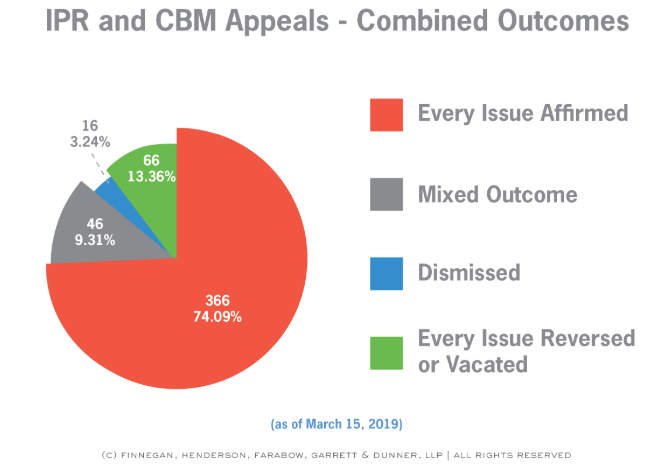The interplay between issued and litigated patents and the Patent Trial and Appeal Board (PTAB) has been much discussed, often with dubious claims supporting hyperbolic rhetoric. The truth, however, is usually less dramatic than the lie. The following supported findings should dispel some of the more ridiculous rhetoric being bandied about.
PTAB challenges have been made against 0.2% of active US patents
Some have argued that many US patents are being challenged. The data shows otherwise. In fact, only 0.2% of all active US patents have been challenged in front of the PTAB. That does not mean that 99.8% of unchallenged patents are valid, but it does reflect the high cost of petitioning the PTAB and the relative rarity of challenges. See Unified Patents Portal Analytics PTAB and Litigation, available at https://portal.unifiedpatents.com/patents/analytics/ptab-and-litigation.
Only 22% of litigated patents have been challenged at the PTAB
Another claim is that the majority of litigated patents are challenged before the Board. Looking at just those patents that have been asserted in litigation since the inception of the PTAB in 2012, it turns out only 22% of them have been subject to challenge—and far fewer were instituted, with still fewer making it to a final written decision. See Unified Patents Portal Analytics PTAB and Litigation, available at https://portal.unifiedpatents.com/patents/analytics/ptab-and-litigation.
The vast majority of challenged patents are in the software/high technology industry
Of those patents that have been challenged at the PTAB and asserted in litigation, 63.5% of them were in the high-technology industry, 16.2% were in the medical industry, and 20.3% were in all other industries combined. See Unified Patents Portal Analytics PTAB and Litigation, available at https://portal.unifiedpatents.com/patents/analytics/ptab-and-litigation.
Conversely, 81% of challenged patents have been litigated at least once
Conversely, the vast majority (81.3%) of patents that have been challenged at the PTAB have been asserted in litigation. See Unified Patents Portal Analytics PTAB and Litigation, available at https://portal.unifiedpatents.com/patents/analytics/ptab-and-litigation.
Almost two-thirds of PTAB challenges are brought by US-based companies
United States-based companies are the biggest users of—and have benefited the most from—the PTAB. Of the petitions for review by the PTAB filed from 2012 to 2019, 62.7% of them have been filed by petitioners based in the United States. See “New study suggests that US companies have received the greatest benefit from post-AIA proceedings,” Unified Patents, Fig. 1 (Dec. 11, 2019) available at https://www.unifiedpatents.com/insights/2019/12/11/new-study-suggests-that-us-companies-have-received-the-greatest-benefit-from-post-aia-proceedings?rq=foreign.
The vast majority of litigations in the US continue to be initiated by NPEs
The chart below shows the number of new patent litigations filed in district court for every year from 2010 through 2019, broken down by the type of plaintiff. The shades of blue represent non-practicing entity plaintiffs, while the lighter shades of gray represent operating company, government, university, and non-profit plaintiffs. See Unified Patents Portal 2019 PTAB Annual Report, available at https://portal.unifiedpatents.com/litigation/annual-report.
Three-fourths of all appealed PTAB decisions are affirmed in full by the Fed Circuit
As of March 15, 2019, the Federal Circuit has reached a decision on the appeals of 479 IPRs and CBMs. In those decisions, the Federal Circuit affirmed the PTAB’s decision 74.09% of the time, affirmed the decision in part 9.31% of the time, and reversed or vacated the entirety of the PTAB’s decision 13.36% of the time. See “Federal Circuit PTAB Appeal Statistics Through March 15, 2019,” Finnegan AIA Blog (April 18, 2019), available at https://www.finnegan.com/en/insights/blogs/america-invents-act/Federal-Circuit-PTAB-Appeal-Statistics-Through-March-15-2019.html.
(For a more detailed analysis of adjusted affirmance rates at the Federal Circuit (which accords with these raw numbers), see https://jolt.law.harvard.edu/assets/articlePDFs/v32/32HarvJLTech575.pdf.)







